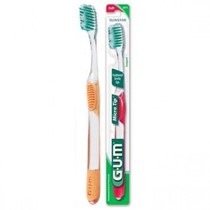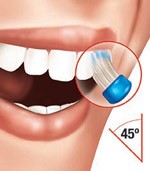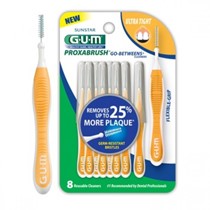Teeth Separation
Teeth Separating, Loose and Shifting
My teeth are beginning to separate and form gaps, and they are feeling loose and are shifting.
These are common signs of advanced gum disease, particularly periodontitis. You should consult a dentist as soon as possible to be examined and diagnosed. Only a dentist can tell you if you definitely have periodontitis.

WHAT IS THE PROBLEM?
These are common signs of advanced gum disease, particularly periodontitis. You should consult a dentist as soon as possible to be examined and diagnosed. Only a dentist can tell you if you definitely have periodontitis.
These are signs of infection and loss of bone around the teeth. It is a serious condition and one of the most common causes of tooth loss.

Figure: In advanced stage gum disease, the gums look very red, puffy, and swollen. They bleed very easily. There will generally be obvious deposits of dental plaque and calculus. The teeth may feel loose and pus may exude. The gums may have recession and the teeth may shift.
HOW IS IT CAUSED?
The teeth are loose because the bacteria in dental plaque and the body’s reaction to inflammation are destroying the bone and other tissues that hold the teeth in the jaw.
Loose teeth can also shift or move around as the bone that used to hold them firmly in place is lost – this is most noticeable between the two upper front teeth when a gap forms between them and continues to widen.
Periodontitis occurs when the challenge from the dental plaque to the body’s defenses is stronger and the reaction of both the bacteria and the body’s defenses results in the irreversible destruction of the tissues that anchor the tooth into the jawbone. In this process, the destruction includes the attachment of the gum to the tooth. The loss of this attachment, or seal, allows the bacteria and their byproducts to get under the gums and create even more inflammation that forms periodontal pockets and destroys the bone and its connection to the tooth. The gums may also start to recede, making the teeth look longer and yellower. Without dental treatment, the process of periodontitis usually progresses in repeated bursts of activity, which may result in the total destruction of the attachment of the tooth to the jaw as well as the surrounding bone. The end result may be loss of the tooth by an extraction procedure.
WHAT WILL HAPPEN WHEN I GO FOR TREATMENT?
Once your dentist has fully assessed your medical and dental status and made a diagnosis, he/she may decide to refer you to a periodontist who is an expert with advanced training in gum diseases and dental implants or provide treatment him/herself. Wherever the care is to be provided, you will also need the care and expert attention of a dental hygienist, who will work with you and the dentist to remove the dental plaque, clean the periodontal pockets, and help reduce the inflammation. They will also give you instructions in how to care for your mouth at home. After that, your condition and its healing will be reassessed. Only your dental team can determine the best course of treatment to offer you. This may include further visits for additional scaling and root planning, gum surgery, or even extractions.
HERE’S WHAT TO DO:
Arrange for a dental check-up as soon as possible. Be prepared to tell your dentist about your condition, for how long you have noticed it, your medical history, and especially about any conditions like heart disease or diabetes and any medications you are taking.
Don’t delay. Start to make an extra effort in your daily oral hygiene. It is most likely that a build-up of dental plaque is a major factor in your condition, so its removal is critical to stop the condition from worsening. Inflamed gums frequently bleed during good oral hygiene. Do not worry about this – it shows you are getting to the site of the inflammation. Even if the condition seems to get better, you should still have your dental check-up as soon as possible!
For all teeth and gums:
Brush all teeth and gums thoroughly with a good quality toothbrush that is designed to reach into and help clean all difficult-to-reach areas. It is here that the dental plaque builds-up – especially along the gum margin, under the gums, and between the teeth.


Figure: Toothbrushes with extremely tapered bristles can reach further under the gum and between the teeth in the hard-to-reach areas than regular “end-rounded” bristles.
Hold the brush so the bristles are pointing toward the gum margin at 45 degrees to the tooth roots and move the brush back and forth with short strokes, making sure all surfaces and sides of all teeth get brushed equally. This should take about two minutes to do well. Your dentist or dental hygienist will provide instructions for the technique that suits your mouth best.

Figure: A key feature of the Bass Technique is placing the bristles at a 45-degree angle to the tooth.
Between the teeth:
Toothbrushes are not able to clean in the hard-to-reach areas between the teeth – a place where bleeding often occurs and gum disease starts. Each day use an interdental brush to clean between each and every tooth. With the correctly designed product, this between-teeth cleaning is both very simple and very effective. Dental floss may be used in place of, or along with, an interdental brush but is typically perceived to be more difficult.



